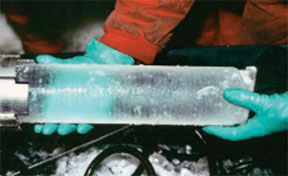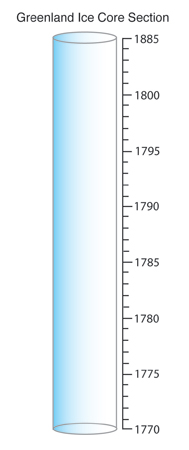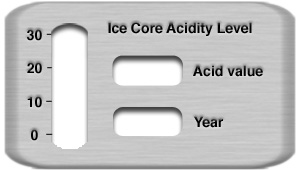


One of the best recorders of environmental change are the annual layers of ice that form in the polar ice sheets. Just the like the rings of a tree, the ice sheets preserve a detailed record of atmospheric change in the layers of ice that are formed. Scientists sample these by taking drill cores of the layered ice, like the one being removed from the drill in the image here.
Information that can be obtained from the yearly layers includes the composition of the atmosphere (as preserved in tiny bubbles) and the loading of particles and other types of contaminants that fell out on the ice surface.

The close-up image here shows an example of the annual layers in an ice core. Light colored bands are summer layers sandwiched between darker winter bands. Eleven years are recorded in the section shown here.
An important indicator of past volcanic activity is the presence of acid layers in ice cores. Deposition of volcanic aerosols composed of sulfuric acid droplets following large eruptions creates excess acidity in the ice that forms. By measuring the ice acidity, it is possible to determine the timing of eruptions and the amount of gaseous components they injected into the atmosphere.

Measure the acidity in the ice core

Drag your mouse over the ice core section to locate any big acid layers.
At what year(s) do they occur?